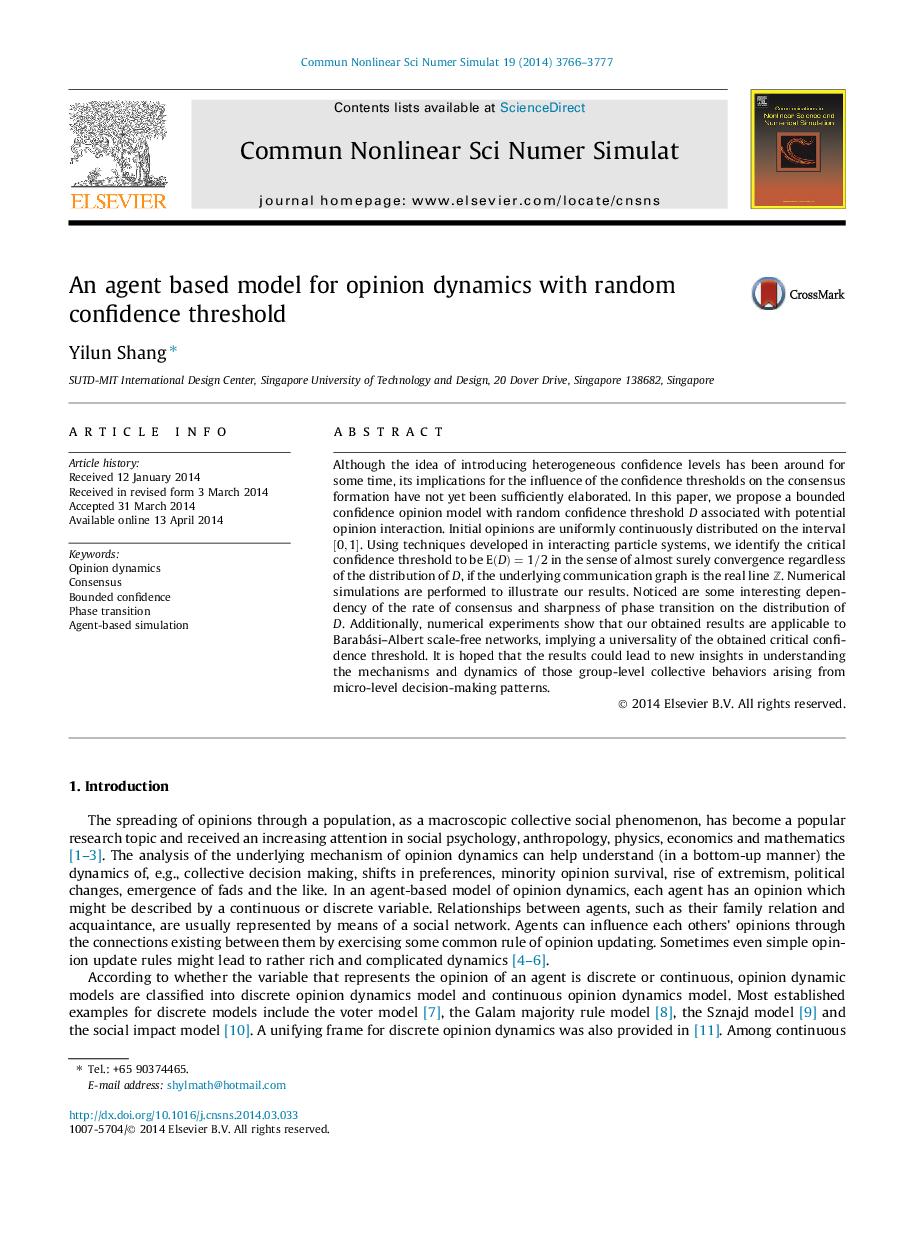| Article ID | Journal | Published Year | Pages | File Type |
|---|---|---|---|---|
| 758893 | Communications in Nonlinear Science and Numerical Simulation | 2014 | 12 Pages |
•A bounded confidence opinion model with random confidence threshold is proposed.•The critical confidence threshold is identified analytically.•Numerical simulations reveal the dependency of consensus speed and transition sharpness on distribution of D.•Results hold for Barabási–Albert scale-free networks.
Although the idea of introducing heterogeneous confidence levels has been around for some time, its implications for the influence of the confidence thresholds on the consensus formation have not yet been sufficiently elaborated. In this paper, we propose a bounded confidence opinion model with random confidence threshold D associated with potential opinion interaction. Initial opinions are uniformly continuously distributed on the interval [0,1][0,1]. Using techniques developed in interacting particle systems, we identify the critical confidence threshold to be E(D)=1/2E(D)=1/2 in the sense of almost surely convergence regardless of the distribution of D , if the underlying communication graph is the real line ZZ. Numerical simulations are performed to illustrate our results. Noticed are some interesting dependency of the rate of consensus and sharpness of phase transition on the distribution of D. Additionally, numerical experiments show that our obtained results are applicable to Barabási–Albert scale-free networks, implying a universality of the obtained critical confidence threshold. It is hoped that the results could lead to new insights in understanding the mechanisms and dynamics of those group-level collective behaviors arising from micro-level decision-making patterns.
